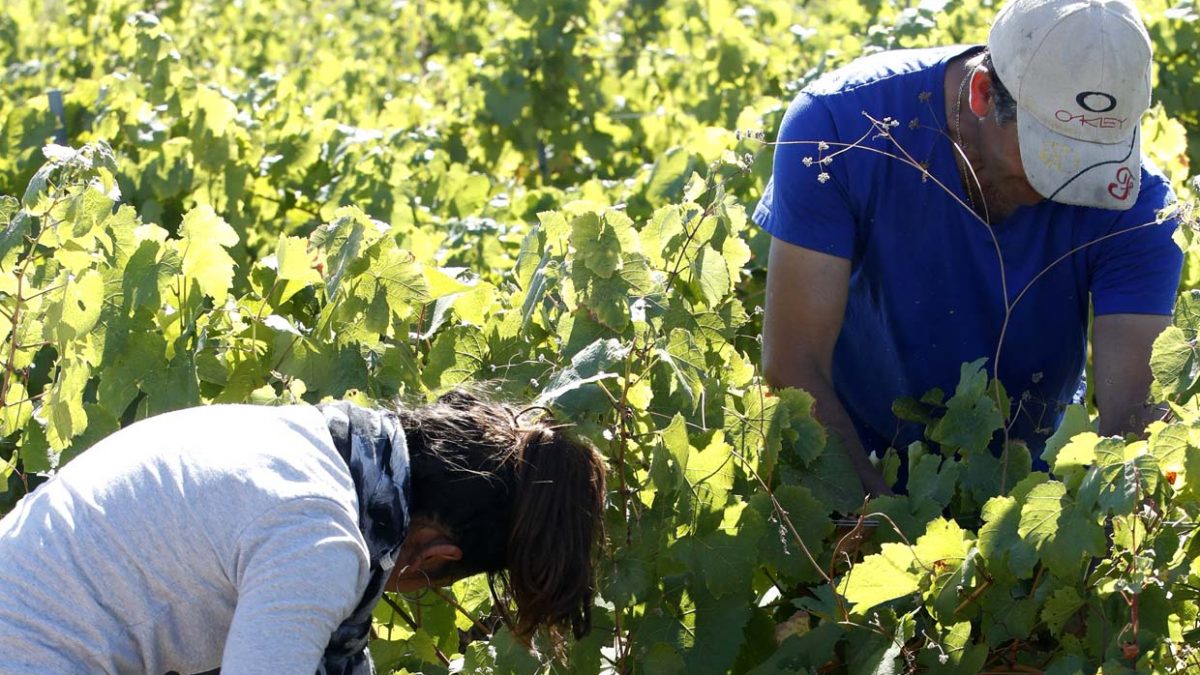2018 Campaign Highlights:
- Exceeds all forecasts and improves the recovery expectations of the vineyard after the serious damage that limited the last two seasons
- The progression of the white variety Albarín is especially striking: it reaches 427,343 kilos and is already the second by volume, with 11.51%
- La Prieto Picudo accounts for 74.68% of the grapes collected: 2,771,784 kilos compared to 891,223 in 2017 and 3,627,946 in the record vintage of 2015
- The extraordinary quality and health of the grape will give aromatic and fresh white and rosé wines, with a great balance between acidity and alcohol
- The red wines will also offer great winemaking possibilities, in the case of young wines and in those that wineries destine to the cellar
Start date of the harvest: September 18
End date of the harvest: October 29
Registered area: 1,322.74 hectares
Production area: 787.22 hectares
Number of registered winemakers: 271
Number of registered wineries: 40
Varietal distribution of grapes collected (Kg)
| VARIETIES | AMOUNT OF GRAPE (Kg) |
|---|---|
| – Main variety 1: Prieto Picudo | 2.771.784 |
| – Main variety 2: Mencía | 42.045 |
| – Authorized variety 1 1: Tempranillo | 246.760 |
| – Main variety 1: Albarín | 427.343 |
| – Main variety 2: Verdejo | 215.380 |
| Total rest of authorized varieties: (Garnacha, Godello, Malvasía y Palomino) |
0 – 8.480 – 0 – 0 |
| TOTAL | 3.711.792 Kg |
QUANTITATIVE ASSESSMENT
The Denomination of Origin Tierra León, which has been operating under that name since the last of November, renounced the Denomination of Origin Tierra de León, closed the 2018 harvest with a total volume of 3,711,792 kilos of qualified grapes , which is an increase of 181.7% over 2017, which will be remembered as the worst ever in the production area of the south of the province: 1,317,763 kilograms collected, with a decrease of 68.7% compared to Those of more than 3.7 million kilos surpass all the calculations of the Technical Services of the Regulatory Council, which in no case foreseen to reach that amount as a consequence of the damage caused to the strains by the disastrous frosts of the end of April and whose total recovery did not seem possible at least until the 2020 harvest.
In view of the figures, everything seems to indicate that the vineyard could probably recover its productive capacity from the harvest of 2019. The notable increase in production over initial forecasts undoubtedly overly prudent is due to several circumstances, such as the higher volume of the grape in the northern zone, the Valdevimbre environment and even Los Oteros, where the vines were most affected; the important increase of the white varieties Albarín and Verdejo and the better behavior of the Mencía inks, which is main in the varietal consideration of the regulations, and especially of the Tempranillo, authorized and usually relegated in the vinification process in this by preference of the processors with respect to the monovarietals of the autochthonous vineyards. However, the performance of the Prieto Picudo, even above the forecasts, was more contained.
The progression of the Albarín , which reached 427,343 kilos (94,488 in 2017), is especially striking comparing with 2014 because it did not go lower, only 181,715 were collected. The consolidation of the vineyards, most of them still very young, and of the grafts practiced on other strains, fundamentally of Verdejo (215,380 kilos against 388,351 of 2015, for example) explain that circumstance, enormously satisfactory for the Regulatory Council for its defense of the organoleptic values of this unique and practically exclusive variety of this production area, in which it already comfortably exceeds the 70 hectares of vineyards. In the percentage distribution of production by variety, Prieto Picudo accounted for 74.68%, compared to only 1.13% for Mencía, also main, and 6.65% for Tempranillo, secondary, as well as Garnacha , which disappears as a reference in this vintage. Among the whites, the native Albarín wine producer (11.51%) already doubles the Verdejo (5.80%), which is also considered as the main one, the same as the Godello, of which 8,480 kilos were certified. The complementary Malvasía and Palomino do not appear with this vintage as references in the area.
In view also of the figures, one of the challenges imposed by the Regulatory Council of the Denomination of Origin León is to promote the most notable increase in the productive area (782.22 hectares on 1,322.74 registered), although it has increased in ten hectares over the 2016, which is the last one that can be taken as a reference, to avoid the loss of that high quality grape.
QUALITATIVE ASSESSMENT
The good weather conditions of the vegetative process and under which the 2018 vintage has been developed in the Denomination of Origin León guarantee that the wines made in this vintage will be of excellent quality.The extraordinary sanitary conditions of the grape , together with the homogeneous development of the maturation process, will allow the wineries to bring to market white and rosé wines, very aromatic and fresh, with great balances between alcohol and acidity in the mouth and very attractive colors. As for the reds, we will find again before a vintage that will offer great winemaking possibilities, both in the case of young wines and those wineries destined for aging, also with excellent parameters of alcohol, acidity and tannins.




Follow Us